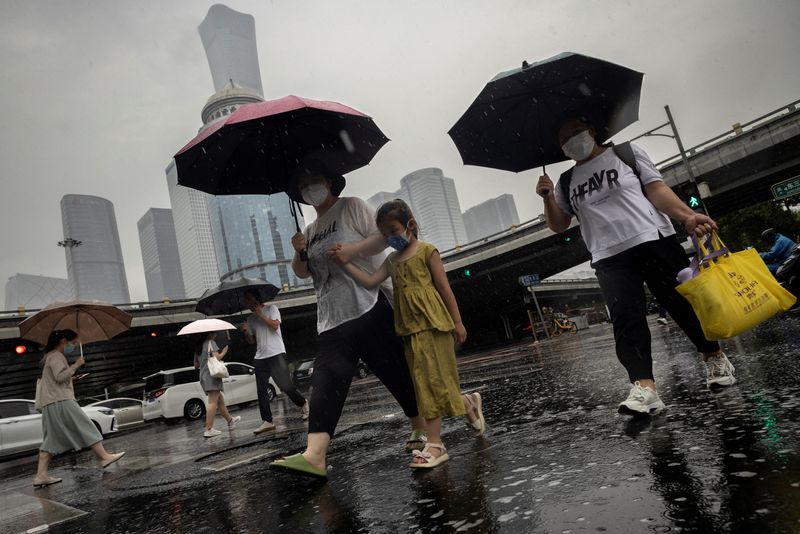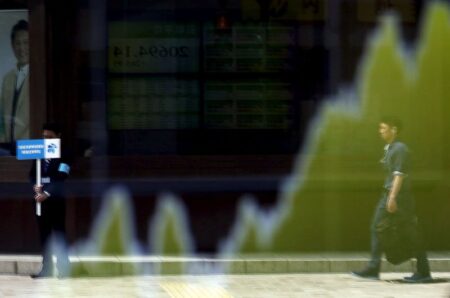Investing.com — Chinese authorities have introduced several key measures aimed at propping up the economy, including reductions in policy rates and reserve requirement ratios, as well as initiatives to lower mortgage rates, especially for first and second homes, analysts at Citi Research said in a note.
A new equity market support facility has also been introduced. While some of these moves were expected, like the policy rate cuts and mortgage repricing, others came as surprises.
The future 25-50 basis point cut in the RRR and the reduction in down payment requirements for second homes caught the market off guard.
These steps, combined with fresh equity market support mechanisms, have spurred a rally in Chinese and China-exposed stocks.
Despite this positive market response, Citi economists caution that these policy measures alone are not enough to reshape China’s longer-term growth trajectory.
The core issue remains weak credit demand, rather than liquidity constraints, meaning that more robust fiscal support may be needed to significantly alter the growth outlook.
“Citi economists therefore maintain their China growth forecast of 4.7% for 2024E, implying that Beijing’s GDP growth target remains at risk,” said analysts at Citi Research.
Nevertheless, these recent developments tilt the balance of risks incrementally toward sectors that are more cyclically sensitive.
In Europe, this shift is particularly meaningful for industries that have strong ties to China. European stocks linked to China have been under severe pressure throughout the year, underperforming both the broader and the index.
Key sectors like luxury goods, IT, autos, and basic resources have been hit hard by falling earnings and valuation declines.
Citi’s analysis shows that earnings expectations for China-sensitive European stocks have been revised down by roughly 10% for 2024, five times the reduction seen in the broader market.
Moreover, forward price-to-earnings ratios for these stocks have dropped by around 7%, even as the overall market has seen these ratios rise. Any stabilization in China could therefore offer a relief to these sectors, making them prime candidates for a recovery.
An element of Citi’s analysis is the contrarian signal arising from the significant earnings downgrades. Citi’s proprietary Earnings Revision Index (ERI) for MSCI Europe has declined to -39%, while the index for European cyclicals has fallen even further, to -50%.
Historically, such extreme negative readings have often been followed by market rebounds. On average, the MSCI Europe index tends to climb by 13% in the year following a drop below -40% on the ERI, with cyclical stocks outperforming defensive ones by around 10% during the same period.
This suggests that, despite recent challenges, there may be significant upside potential for cyclical sectors in Europe.
Rate cuts, both in Europe and globally, tend to support equity markets, especially outside of major recessions or financial crises.
Cyclical stocks, in particular, have historically outperformed their defensive peers during periods of monetary easing. As central banks, including the U.S. Federal Reserve, shift toward a more accommodative stance, cyclical sectors could benefit from the supportive environment.
Furthermore, seasonal trends often favor cyclicals heading into the year-end, adding further momentum to the trade.
Against this backdrop, Citi has adjusted its European sector strategy to reflect a more balanced, or “barbell,” approach. While maintaining overweight positions in defensive growth sectors such as technology and healthcare, Citi has selectively increased its exposure to cyclical stocks.
In recent weeks, Citi has upgraded the autos sector to a “neutral” rating, reflecting improved sentiment linked to China’s policy support.
Similarly, basic resources have also been upgraded to Neutral, as prospects for stabilization in China begin to brighten the outlook for commodities.
At the same time, Citi has reduced its exposure to more defensive areas, downgrading food and beverages, and moving telecoms to an underweight rating, as these sectors are expected to face headwinds relative to the improving cyclical environment.
Citi analysts remain cautious about China’s overall growth outlook, stressing that without more substantial fiscal intervention, the country’s economy may continue to face headwinds.
However, the recent wave of policy easing, though not transformational, offers a degree of optimism that could be particularly beneficial for European cyclical sectors.
Read the full article here
















